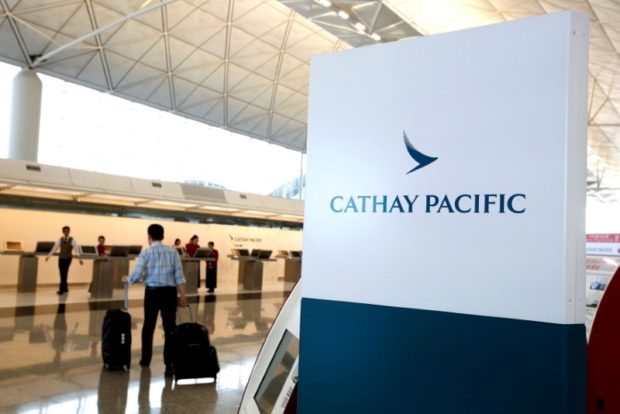
A passenger walks to the First Class counter of Cathay Pacific Airways at Hong Kong Airport in Hong Kong, China April 4, 2018. REUTERS FILE PHOTO
DOHA — Cathay Pacific Airways, battered by strict quarantine rules that have led to a 98% fall in passenger numbers, is preparing to bring back more planes to rebuild Hong Kong’s hub status as restrictions ease, the airline’s chief executive said.
“We have about one-third of our passenger fleet still parked in the desert, not being utilized,” Cathay Chief Executive Augustus Tang told Reuters on the sidelines of an airline industry gathering in Doha. “We are making preparations for them gradually coming back ahead of the curve.”
Rival Singapore Airlines has seen a surge in demand since Singapore’s quarantine rules eased. It was back at 61% of pre-COVID-19 capacity in May, filling 78.2% of seats in its best month since the start of the pandemic.
Cathay, by contrast, operated only 4% of its pre-COVID capacity in May and filled 60.5% of its seats.
The need for crew members on passenger flights to quarantine in a hotel for three days after flying to destinations outside mainland China means it has few frequencies to offer potential transit passengers.
Passengers heading to Hong Kong also face a week of hotel quarantine on arrival, limiting demand.
Tang said it was encouraging that Hong Kong had gradually been reducing the quarantine time required, which once was as high as three weeks for passengers from destinations including the United States and Britain.
“It’s moving in the right direction, and the momentum is gathering and so we are pretty optimistic that we are going to see more and more of this opening up,” he said.
Cathay has 45 passenger destinations back in operation at present, up from 30 at the start of the year, and plans for up to 70 to be available by the end of the year as demand improves, he said. That compares to the 108 passenger destinations it operated before the pandemic.
RELATED STORIES
Cathay Pacific sacks two aircrew for breaching COVID-19 rules
Cathay Pacific to require COVID-19 vaccinations for HK airline crew by Aug. 31
Cathay Pacific to comply with Hong Kong probes into COVID-19 outbreak
Cathay Pacific to cut workforce by nearly a quarter

